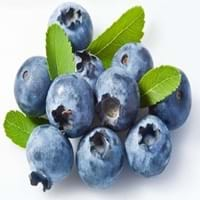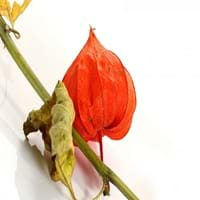Health Benefits
Cancer prevention, Cures gastro-intestinal troubles, Improves night vision, Improves stomach health, Prevents diabetes, Prevents high blood pressure, Reduces blood circulation problems
Anti-oxidant properties, Anti-inflammatory properties, Cancer prevention, Maintains healthy cholesterol level, Reduces blood circulation problems, Treatment of cough, fever & sore throat, Treatment of Hypertension
General Benefits
Fights against infections, Helps in weight loss, Prevents blood clotting in vessels, Treatment of urinary tract infections
Treatment of asthma, Treatment of cataract, Treatment of hepatitis, Treatment of macular degeneration, Treatment of neurodegenerative diseases
Skin Benefits
Anti-aging benefits, Nourishes skin, Protects against skin damage
Treatment of Rheumatism & Dermatitis, Treatment of Skin Inflammation
Hair Benefits
Prevents hair loss
Unknown
Allergy Symptoms
Not Available
NA
Side Effects
Decrease in blood sugar levels, Diarrhoea, Dizziness, Headache, Internal bleeding, Stomach pain
Hypertension, Ventricular Tachycardia
Best Time to Eat
As a snack in the late afternoon, Don't consume at night and before bed, Eat the fresh ones, avoid mixing with any other foods, don't eat after meal., Morning time (before lunch)
As a snack in the late afternoon, Eat the fresh ones, avoid mixing with any other foods, don't eat after meal., Morning time (before lunch), Strictly avoid empty stomach
Vitamin B5 (Pantothenic Acid)
Not Available
Vitamin B6 (Pyridoxin)
Not Available
Vitamin B9 (Folic acid)
Not Available
Vitamin C (Ascorbic Acid)
Vitamin K (Phyllochinone)
Not Available
Lutein+Zeaxanthin
Not Available
Water Content
Not Available
Calories in Fresh Fruit with Peel
Calories in Fresh Fruit without Peel
Not Available
Not Available
Calories in Frozen Form
Not Available
Not Available
Calories in Dried Form
Not Available
Not Available
Calories in Canned Form
Not Available
Not Available
Type
Berry
Fruit vegetable
Season
Summer
Spring, Summer
Varieties
Dwarf bilberry, Piper, bog blueberry, Northern bilberry, Mountain bilberry and Oval-leaved bilberry
Physalis franchetii, Physalis pruinosa, Physalis peruviana, Physalis heterophylla and Physalis philadelphica
Color
Dark purple
Bright Yellow, Orange
Inside Color
Light Green
Orange
Origin
Unknown
Chile, Peru
Soil Type
Moist, Well-aerated
NA
Climatic Conditions
Cold
NA
Facts about
- Bilberries are used in manufacturing of alcoholic drinks.
- They are used to improve aromas of sorbets.
- The green extract of it's leaves is used in textile industry as natural dye.
NA
Other Countries
Denmark, Finland, Iceland, Sweden
NA
Top Importer
United States of America
Netherlands
Top Exporter
Chile
Colombia
Botanical Name
Vaccinium myrtillus
Physalis Peruviana
Synonym
blaeberry, whinberry, European blueberry, whortleberry
Alkekengi, Herschellia & Pentaphitrum
Subkingdom
Tracheobionta
Tracheobionta
Division
Magnoliophyta
Magnoliophyta
Class
Magnoliopsida
Magnoliopsida
Subclass
Dillenhidae
Asteridae
Family
Ericaceae
Solanaceae
Species
Vaccinium myrtillus
Physalis
Generic Group
Heath
Not Available
Difference Between Bilberry and Physalis
We might think that Bilberry and Physalis are similar with respect to nutritional value and health benefits. But the nutrient content of both fruits is different. Bilberry and Physalis Facts such as their taste, shape, color, and size are also distinct. The difference between Bilberry and Physalis is explained here.
The amount of calories in 100 gm of fresh Bilberry and Physalis with peel is 44.00 kcal and 77.00 kcal and the amount of calories without peel is Not Available and Not Available respectively. Thus, Bilberry and Physalis belong to Low Calorie Fruits and High Calorie Fruits category.These fruits might or might not differ with respect to their scientific classification. The order of Bilberry and Physalis is Ericales and Solanales respectively. Bilberry belongs to Ericaceae family and Physalis belongs to Solanaceae family. Bilberry belongs to Vaccinium genus of Vaccinium myrtillus species and Physalis belongs to Physalis genus of Physalis species. Beings plants, both fruits belong to Plantae Kingdom.









